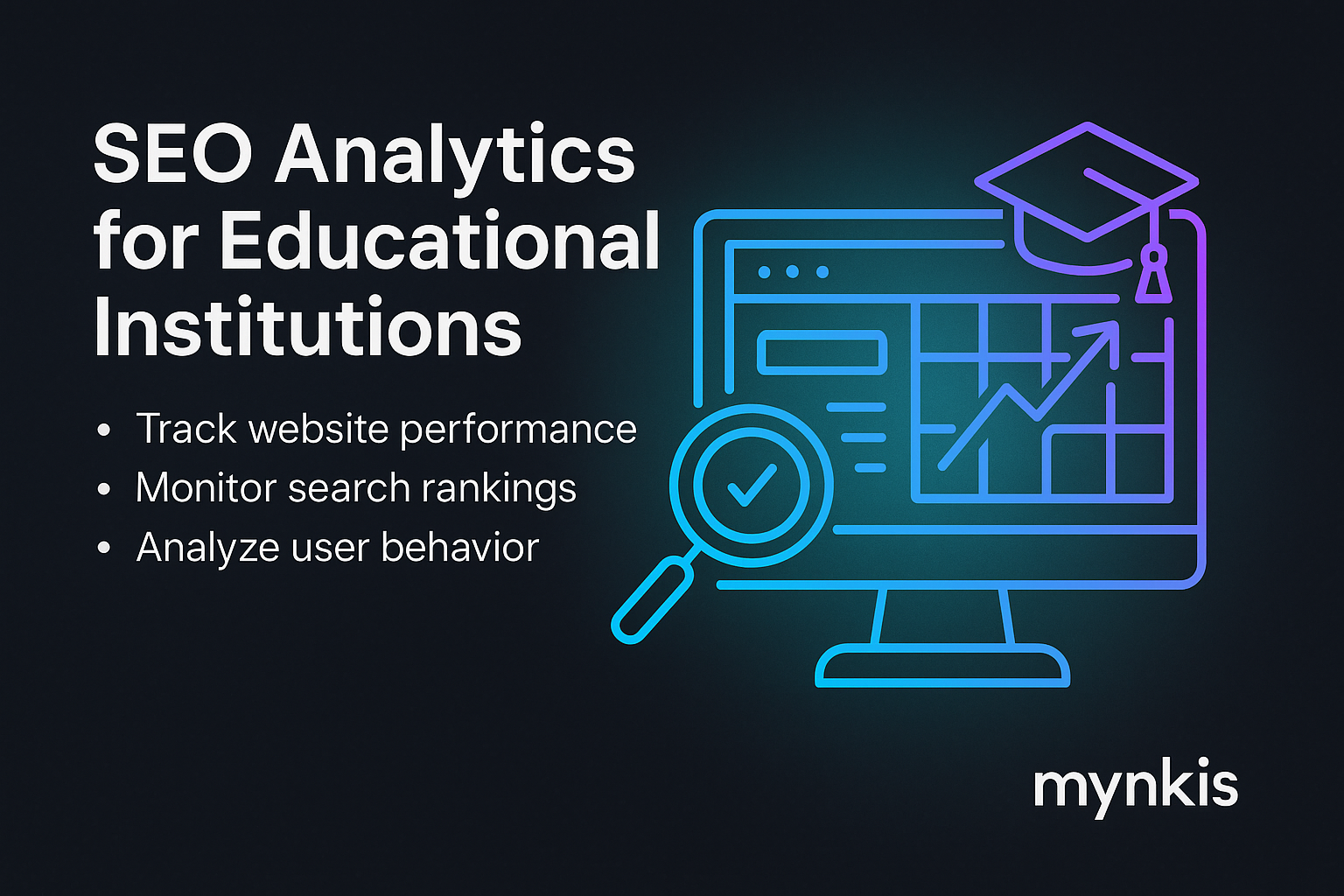Schedule a Demo
In my work with various schools and universities, I've seen firsthand how essential a robust online presence is for modern educational institutions. SEO isn't just about getting more traffic; it's about attracting the right kind of traffic—students, faculty, and partners who are actively seeking out what your institution offers.
SEO analytics is the process of analyzing data to understand your website's performance in search engine results. It provides insights into how users interact with your site, what content they engage with, and how you can improve your site to rank higher. Think of SEO analytics as the roadmap that guides your digital strategy, helping you navigate the complex landscape of search engine optimization.
When delving into SEO analytics, several key metrics stand out. Organic traffic shows how many visitors are coming to your site through search engines, reflecting the effectiveness of your SEO efforts. Bounce rate is another critical metric; a high bounce rate might indicate that visitors aren't finding what they're looking for. Keyword rankings help you see where you stand in search results for terms relevant to your educational offerings. Additionally, page load speed and mobile responsiveness can significantly impact your SEO performance.
Google Analytics is a powerful tool that many educational institutions rely on to track their SEO performance. This platform offers a wealth of data, from basic traffic statistics to detailed insights into user behavior. I often find myself setting up custom reports in Google Analytics to focus on specific areas relevant to schools—like tracking enrollment pages or course catalog searches.
Goals in Google Analytics are like checkpoints that indicate whether a user has completed a desired action, such as filling out an application form or downloading a prospectus. By setting up these goals, you can measure how well your SEO efforts are translating into tangible results. My experience tells me that educational institutions often underestimate the value of this step, which is crucial for understanding the true impact of their digital presence.
SEO analytics is not just about numbers; it's about understanding your audience. By analyzing user behavior, such as which pages they visit most often and how long they stay on each page, you can tailor your website to better meet their needs. For example, if students are frequently visiting the financial aid section, it might be beneficial to improve the content there or make it more easily accessible.
Content is king in the realm of SEO, and this is particularly true for educational websites. High-quality, relevant content that addresses the needs and questions of your audience can significantly boost your rankings. As someone who has worked on numerous educational projects, I can attest that investing time in creating well-researched, informative articles and guides can pay off in spades in terms of SEO performance.
Technical SEO refers to the optimization of your website's technical elements to improve its search engine rankings. This includes factors like site architecture, URL structure, and schema markup. In my experience, educational institutions often overlook these details, but they can make a huge difference in how well your site performs. A well-optimized site not only ranks better but also provides a smoother user experience, which is crucial for keeping potential students engaged.
Understanding what your competitors are doing can provide valuable insights into your own SEO strategy. By analyzing the keywords they're targeting, the content they're producing, and the backlinks they're acquiring, you can identify opportunities to improve your own site. In my work, I've found that competitor analysis can be particularly useful for educational institutions looking to stand out in a crowded market.
Conducting regular SEO audits is a proactive way to ensure your website's performance remains optimal. These audits can help identify issues like broken links, slow page load times, and missing meta tags that could be hampering your SEO efforts. Based on available research, educational institutions that conduct regular audits often see improved search rankings and better user experiences. However, results may vary based on individual efforts and external factors.
SEO should not be an island; it needs to be integrated with your broader marketing strategy. For example, combining SEO with social media marketing can amplify your reach and drive more traffic to your site. In my work with schools, I've seen how coordinated efforts across different channels can lead to significant improvements in overall digital performance.
Beyond Google Analytics, there are numerous tools available that can help you delve deeper into your SEO performance. Tools like SEMrush, Ahrefs, and Moz offer features like keyword research, backlink analysis, and site audits that can give you a more comprehensive view of your SEO landscape. In my experience, using a combination of these tools can provide a fuller picture of your website's performance.
SEO is not a set-it-and-forget-it task; it requires continuous improvement and adaptation. Search engine algorithms change frequently, and what worked last year might not work today. My advice to educational institutions is to stay informed about the latest trends and best practices in SEO, and be ready to adjust your strategy accordingly. This approach ensures that your website remains competitive and relevant.
Finally, SEO can be a powerful tool for student recruitment. By optimizing your website for relevant keywords and ensuring that it provides a seamless user experience, you can attract more prospective students. In my work, I've seen institutions successfully use SEO to increase their visibility among key demographics, resulting in higher enrollment numbers.
